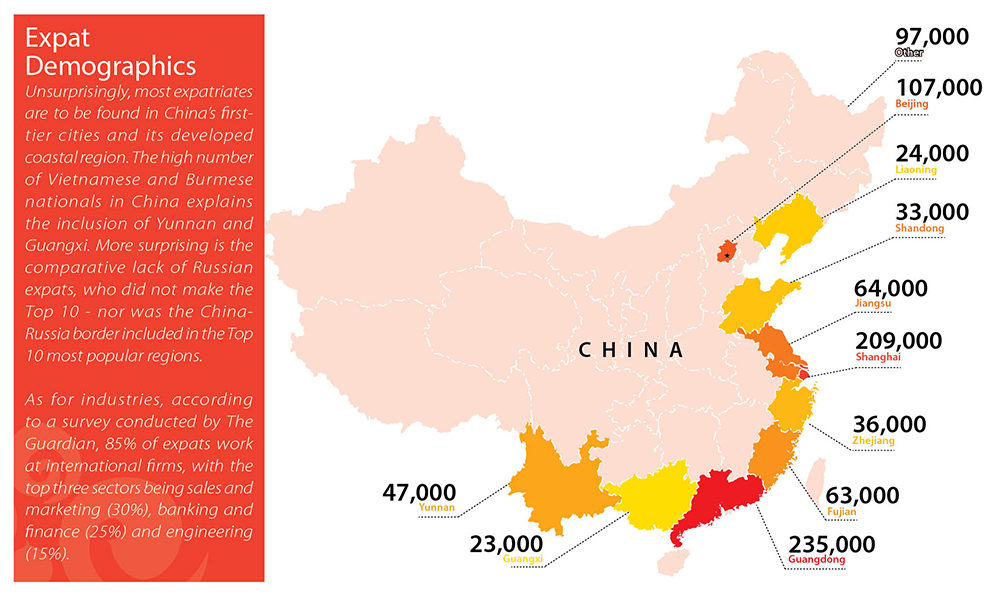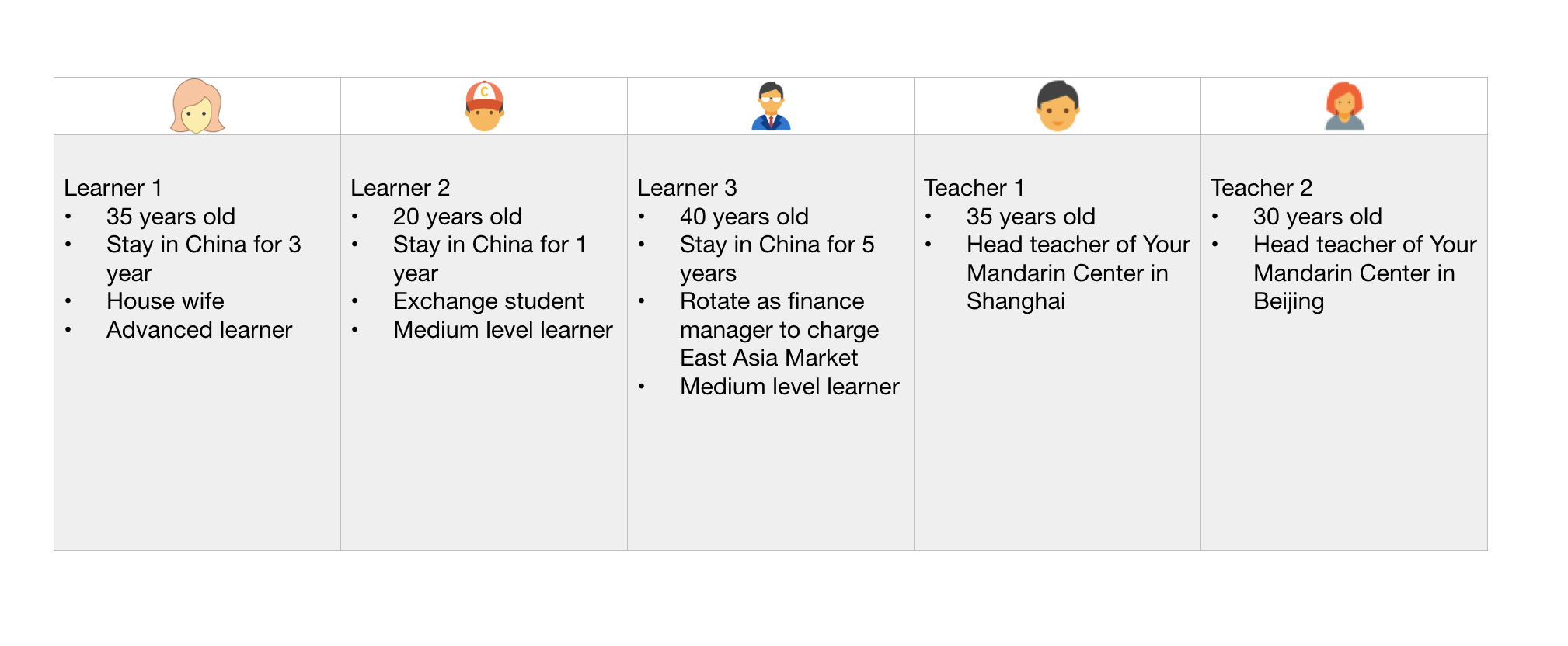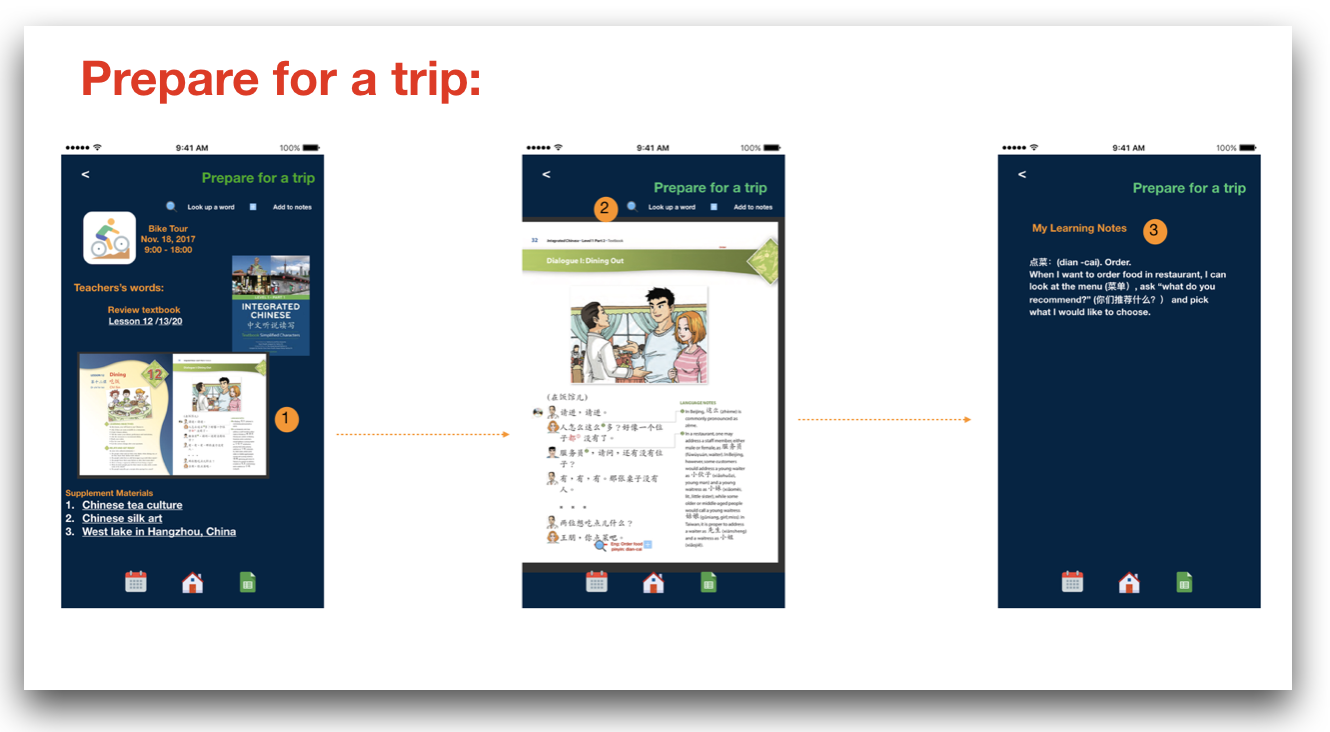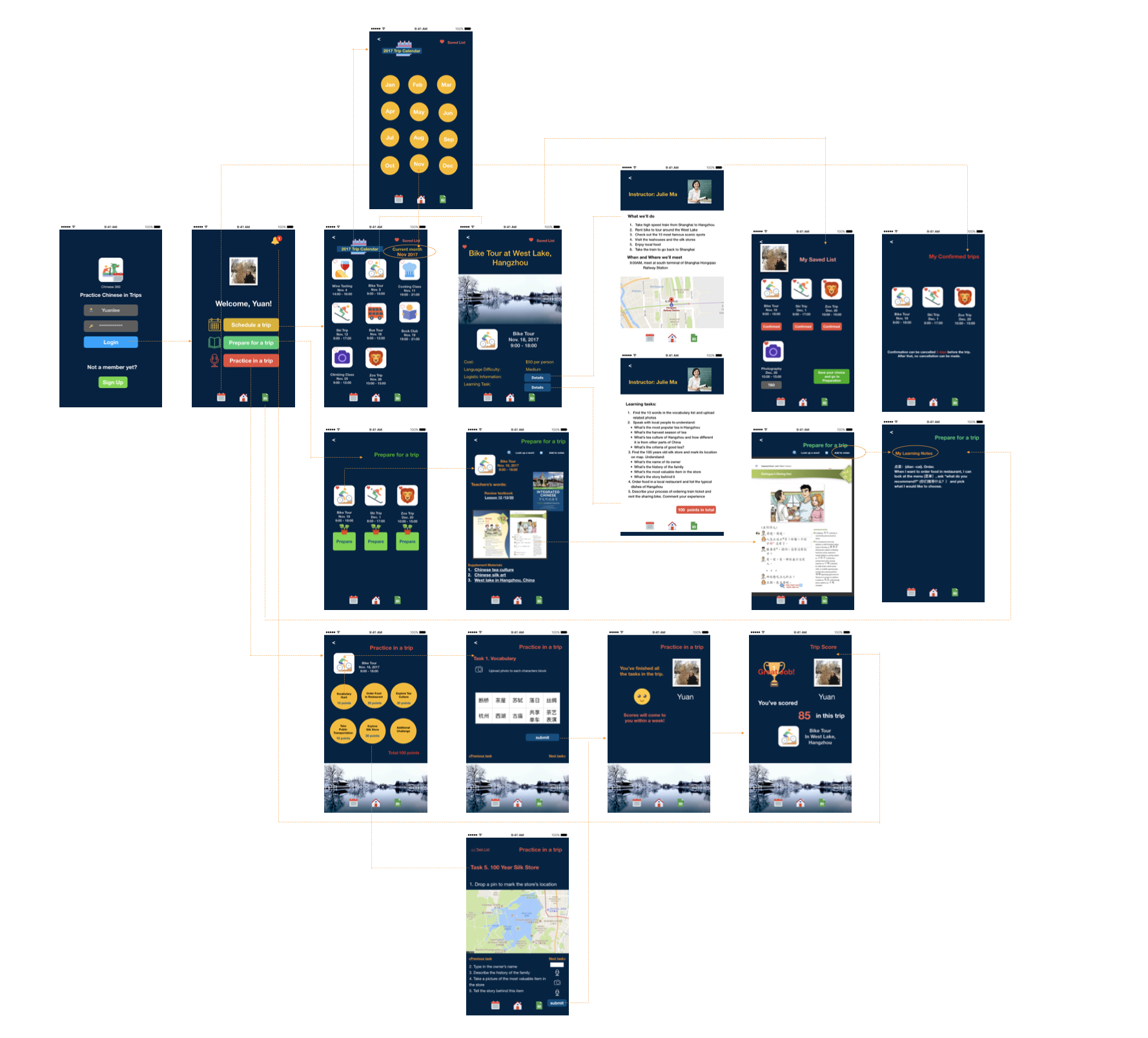Chinese 360:
Mobile App for Practicing Chinese in Trip

Overview
Chinese 360 is a mobile learning app for CFL (Chinese as foreign language) learners to practice Chinese in trips. It enables users to schedule a trip, prepare for a trip and practice in a trip by providing learning materials, learning tasks, embedded translation tools, and assessment tools.
Duration: 4 months (Sep-Dec 2017)
My Role: UX researcher and designer (individual project)
Output: A hi-fi digital prototype
My leading design philosophy of this project is “learning by doing”. I believe that well-designed learning tasks can effectively trigger learners’ interest and keep them actively participating in learning. I also practice “participatory design”, by including the users in the design process and frequently seeking their feedback. It is from the user research, that I truly understand the problem; and it is from the participatory design, that I make right design decisions. Last but not least, I value the opinions form experts, i.e. the principle and teathe principle and teachers in the language learning center in my case, who provide me with a lot of professional suggestions.






